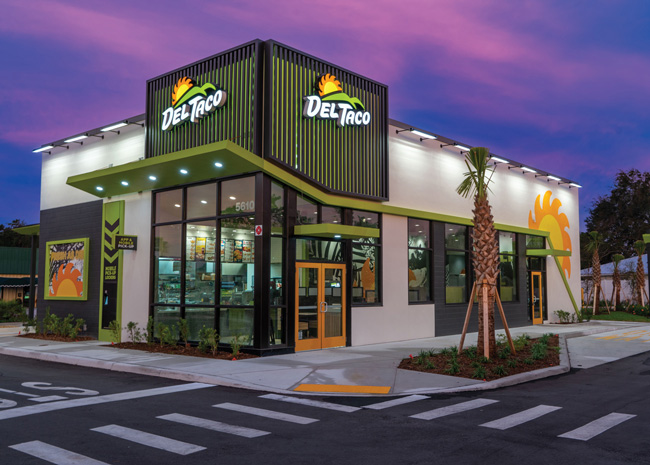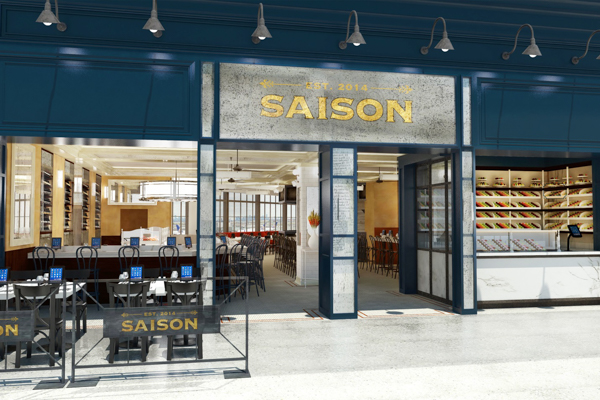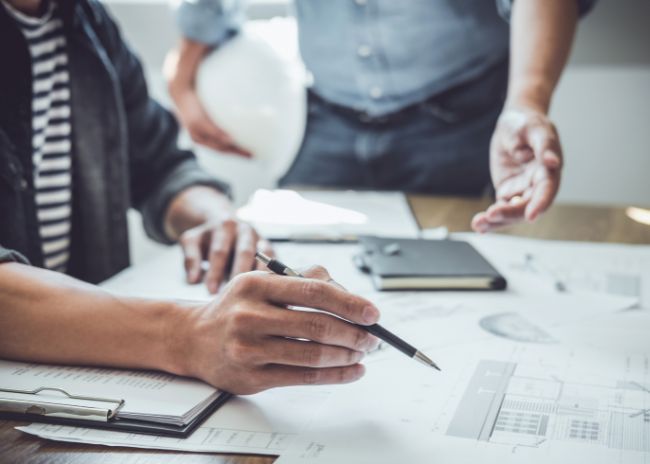Restaurant design projects are typically derailed for one of two reasons: They’ve gone over budget or they’ve taken too long.
The cost of everything has risen dramatically over the past few years, says Steve Starr, AIA, FCSI, president of Starr Design, Charlotte, N.C. Construction, furnishings and equipment are all more expensive, the labor market is tight and lead times have grown longer. All of which means it’s become easier to go over budget on a restaurant design and buildout.
Here are 10 ways to keep budgets in check.
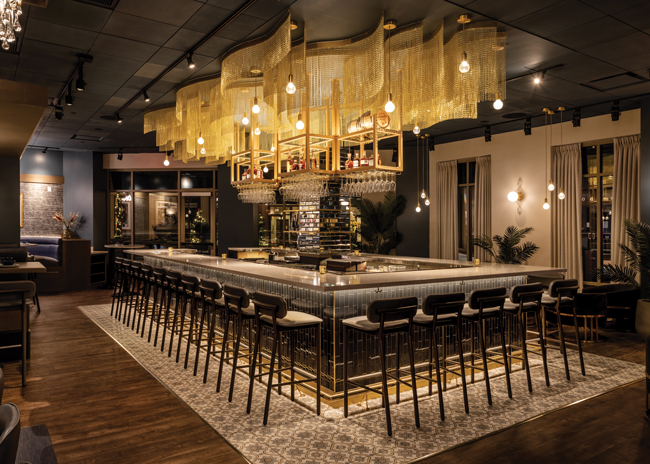 The team at Dunne Kozlowski use spreadsheets to aggregate all information on contractors and vendors to keep their projects on track. Image courtesy of Dunne Kozlowski
The team at Dunne Kozlowski use spreadsheets to aggregate all information on contractors and vendors to keep their projects on track. Image courtesy of Dunne Kozlowski
1. Make use of technology.
Before you start on a design or building project, use technology to test the waters, whether with feasibility studies or programming to see where these projects are going phase by phase, says Jeremy Kittelson, principal, Ricca Design Studio, Denver, Colo. “We use budgeting tools at every phase of design to help keep projects on target,” he adds.
Rick McCormack, president, Studio McCormack, Costa Mesa, Calif., always recommends doing an American Land Title Association (ALTA) survey, which involves hiring a third party to look into permits and potential hurdles. This third party investigates everything and gives you a timeline, he says, including how long it takes to get permits, which government agency you need to go through, and how much it will cost.
The most important technology to employ to keep budgets in check throughout the entire development process is any that facilitates and improves communication, says Starr. “Get everyone involved in all the information,” he says, “and keep it up so everyone can make the best possible decisions along the way.” Starr’s found this method has proved far more reliable and less time-consuming than advanced design software tied to cost estimating tools.
The team approach at Dunne Kozlowski, Chicago, Ill., is more low-tech. They use spreadsheets to aggregate all the information on contractors and vendors. “The template ensures we’ve checked all the buckets,” says owner and principal Corey Dunne, “and allows us to have a high, a low and a target.”
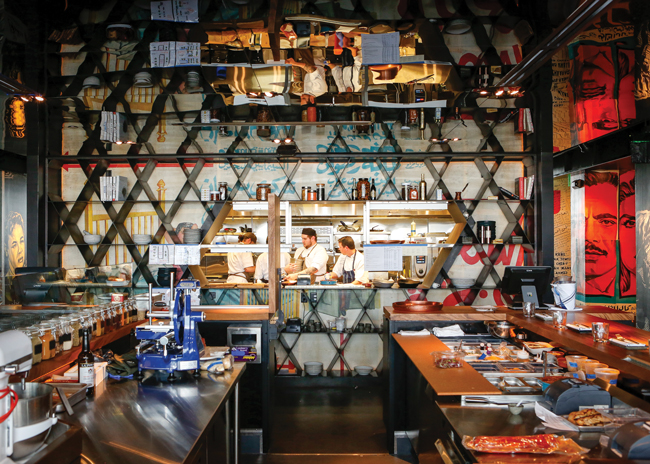 Ricca Design Studio uses budgeting tools at every phase of design to help keep projects like El Five in Denver, pictured here, on target. Image courtesy of Ricca Design Studio.
Ricca Design Studio uses budgeting tools at every phase of design to help keep projects like El Five in Denver, pictured here, on target. Image courtesy of Ricca Design Studio.
2. Do your due diligence.
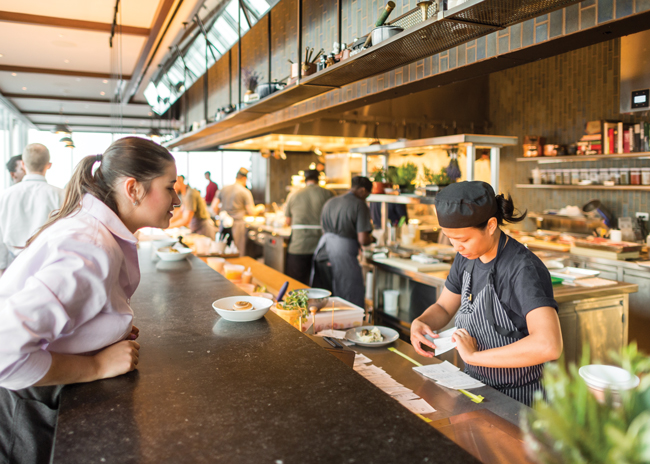 Value engineering can save a lot of money on a project but is best employed in areas of a restaurant where customers don’t have many touch points, says Jeremy Kittelson, principal, Ricca Design Studio. Image of Manhatta restaurant courtesy of Ricca Design StudioBefore you sign a lease on a second-generation building space that you plan to renovate, bring in a contractor, says McCormack. “Once you start tearing into a building you can run into unpleasant surprises.”
Value engineering can save a lot of money on a project but is best employed in areas of a restaurant where customers don’t have many touch points, says Jeremy Kittelson, principal, Ricca Design Studio. Image of Manhatta restaurant courtesy of Ricca Design StudioBefore you sign a lease on a second-generation building space that you plan to renovate, bring in a contractor, says McCormack. “Once you start tearing into a building you can run into unpleasant surprises.”
One of the most critical things to know, he says, is how you’re going to exhaust the kitchen equipment. If the space was previously a kitchen, it’s not as big of a concern but that doesn’t mean it was properly vented in the first place. And if the space wasn’t a restaurant previously, there could be some complications ahead, particularly in a multi-story building.
3. Check in frequently with stakeholders.
Kittelson stays on top of his projects and provides budget updates throughout the building process. This helps operators and other stakeholders make informed decisions, stay on task and react appropriately to any needs that crop up. “It also really helps everyone stay aligned to the financial goals of the project,” he adds.
Don’t ignore a project once it’s under construction, says McCormack, who visits each restaurant at least three times during buildout. And he always visits before the contractors close the walls. But, even more important than his visit at that point is that the MEP consultants visit, he says. “I’ve seen them catch big mistakes where the contractor had to go back and make changes. But it saves a lot of headache before they’ve closed up the walls.”
4. Buy used equipment where appropriate.
The cost of equipment has soared in the past four years, says Dunne, so he suggests a hybrid approach to purchasing. The most critical equipment can be bought new but secondary equipment can be acquired lightly used. “You can save 35% by doing a hybrid approach — and that can be six figures,” Dunne says.
To find used kitchen equipment explore specialized vendors that often work through equipment providers. Some regions have warehouse facilities open to the public for direct purchases. Additionally, says Dunne, “networking within the restaurant industry can lead to opportunities to buy used equipment from other restaurateurs upgrading or closing.”
5. Consider equipment alternatives.
Think of pieces of equipment you can do without. If a chargrill is only going to be used for a couple of menu items, it’s better to reconsider those menu items and not install the grill at all, Kittelson says.
And since hoods are one of the most expensive things in a kitchen, consider ventless equipment like combi ovens and you could eliminate that need altogether. “The equipment might be more expensive upfront but you don’t need the hood and the cost per square foot goes down because you don’t need as big of a kitchen, Kittelson points out.
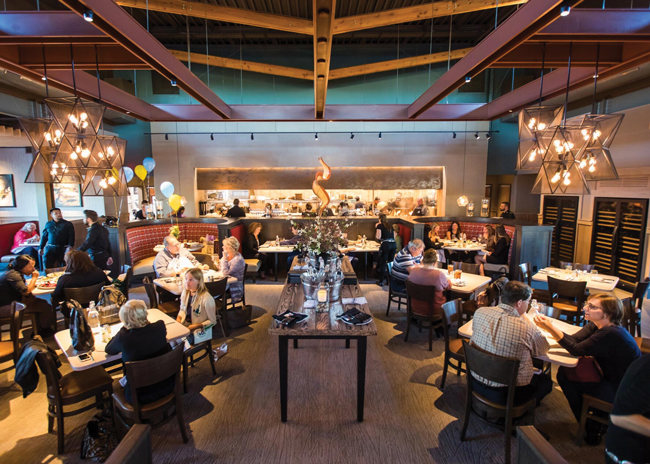 Value engineering can’t just be a cost-cutting exercise, according to Steve Starr of Starr Design: “Look at everything in terms of how much it costs and how much it contributes to the overall guest experience to determine its true value.” Image of Firebirds restaurants courtesy of Starr Design
Value engineering can’t just be a cost-cutting exercise, according to Steve Starr of Starr Design: “Look at everything in terms of how much it costs and how much it contributes to the overall guest experience to determine its true value.” Image of Firebirds restaurants courtesy of Starr Design
6. Value engineer strategically.
Value engineering can save a lot of money on a project and is best employed in areas of a restaurant where customers don’t have many touch points, Kittelson says.
Don’t cut costs around anything that’s the center of your revenue generation, he says, such as a pizza oven or a bar top.
Dunne likes to see where he can get the most bang for his buck, which means anything at eye level that has a big visual impact, as well as anything a customer might touch and feel, like furniture. “You’re better spending money on things people are interacting with,” he explains.
Cut corners on anything not directly impacting the customer, such as lighting fixtures, which customers tend not to examine carefully. Flooring can be done piecemeal and savings can be gleaned from utilizing economy flooring in areas the customer doesn’t see, says Dunne’s partner Paul Kozlowski, owner and director. Don’t skimp on entrance or bar area flooring, he advises.
Being selective about splurging on customer touchpoints carries through the restaurant, into areas like furniture. A less expensive but durable seat can be paired with an upholstered back in a richer fabric like velvet, giving the perception of a higher-end chair. “You get credit for that richness and tactile-ness,” says Dunne.
Instead of featuring wooden beams on a ceiling McCormack opts for realistic foam beams. Not only do these save money, he says, they’re easier and cheaper to install since they’re so light. Likewise, with porcelain and quartz countertops. “It’s hard to spec granite or marble when you can get something just like it that is more durable, cheaper and easier to maintain.”
Savings can be found throughout the building process, says McCormack. He recently worked on a restaurant in Phoenix where the cost of construction was 30% higher than originally expected. So, he simplified the building. This included removing pop-outs between windows, eliminating a step in the roof; and deciding against a solid patio cover in favor of a less expensive shade cloth “which down the road won’t be as long-lasting as a roof, but it gets the cost of construction down,” he says.
But value engineering can’t just be a cost-cutting exercise, Starr says. “It must be about clarifying the brand messaging, setting priorities on where money is going to be spent and looking at both sides of the return-on-investment equation: sales and operating costs versus development costs,” says Starr. “Look at everything in terms of how much it costs and how much it contributes to the overall guest experience to determine its true value.”
7. Communication is key.
Dunne and Kozlowski like to pause once they’re halfway through a design project to take a pressure check. “We’ll align with a general contractor so they can talk about infrastructure, etc., and we’ll go out to our vendor network and start pricing things like millwork, furniture, window treatments. More times than not, there’s a conversation of your target was here, the budget has got us to here, let’s have a conversation: Are we going to increase the budget or pull back in the scope?” Dunne says.
That halfway point is vital, according to Dunne. If you don’t examine your budget at the halfway point, you end up being reactionary instead of proactive, which means “you start making cuts that weren’t necessary or you’re cutting too much because it’s a knee jerk reaction,” he says.
And, as silly as it sounds, make sure you know exactly what the budget includes. “Holistically, you need to look at budgets not just pieces of budgets,” says Kozlowski. A budget needs to include everything down to artwork, security systems and accessories.
Starr likes to establish the conceptual budget early and with as much detail as possible. “We try to document all the assumptions we make early and then check those assumptions by estimating the project twice during the design phase, after schematic design and design development,” he says. “But he also likes to get general contractors and vendors involved early to help with the budgeting and cost estimating, which helps to limit the costly surprises.
 Value engineering can’t just be a cost-cutting exercise, according to Steve Starr of Starr Design: “Look at everything in terms of how much it costs and how much it contributes to the overall guest experience to determine its true value.” Image of Firebirds restaurants courtesy of Starr Design
Value engineering can’t just be a cost-cutting exercise, according to Steve Starr of Starr Design: “Look at everything in terms of how much it costs and how much it contributes to the overall guest experience to determine its true value.” Image of Firebirds restaurants courtesy of Starr Design
8. Bring in contractors early.
When you make tweaks to a second-generation kitchen, that often means more changes because it no longer meets code, says Dunne. So, he likes to bring in a contractor early in the design process to see if anything can be cut — which can translate to significant savings.
“Contractors are typically connected to real-time pricing and can suggest cost-effective alternatives and adjustments, like combining an air handler and makeup air unit into one DOAS [dedicated outdoor air system] unit,” says Dunne.
9. Have a bumper in the budget.
Dunne and Kozlowski like to have a contingency of around 20% built into the budget from the beginning to allow for a few things to go over budget. However, this is a moving target.
“As we refine the process that number goes down. So when we do our 50% design check-in, we like to get that down to 10%, and then down to 5% when we go out to bid. We never want to go beyond 5% because there’s always something unforeseen you can’t control,” says Kozlowski. “Without that safety net you don’t have a margin for error.”
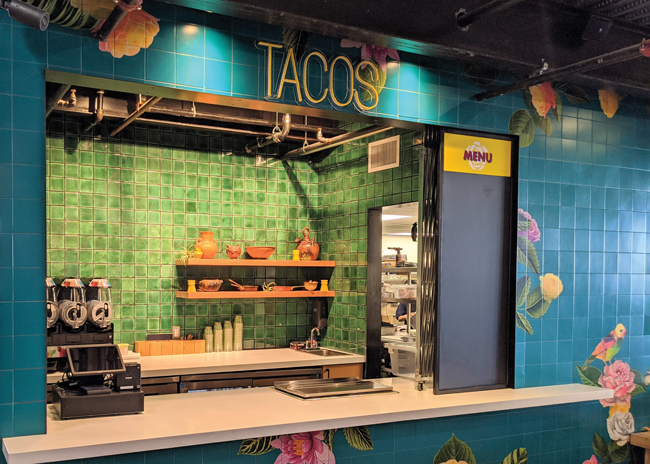 Some things should never be skimped on, including anything linked with sanitation, health or safety, per the team at Ricca Design Studio. Image of Sawmill Market courtesy of Ricca Design Studio
Some things should never be skimped on, including anything linked with sanitation, health or safety, per the team at Ricca Design Studio. Image of Sawmill Market courtesy of Ricca Design Studio
10. Work with your landlord.
Often, landlords provide a tenant improvement allowance, which is specified in the lease agreement.
You can negotiate with your landlord to pay for infrastructure elements that add value to the property such as utilities, mechanical, electrical, and plumbing systems, as well as building out bathrooms.
“Negotiating these upfront ensures shared costs for improvements benefiting the building’s overall value,” says Kozlowski. “However, elements specific to the restaurant, such as custom kitchen installations or specialized decor typically wouldn’t be covered, as they don’t provide lasting value to the building owner.”
Don’t Skimp On Safety
While sticking to a budget is extremely important, some things should never be skimped on, says Jeremy Kittelson, principal, Ricca Design Studio, Denver, Colo. These include the exhaust system, the HVAC and anything linked with sanitation, health or safety, such as a three-compartment sink.
Think long-term. The upfront costs for electric equipment tend to be 10% to 25% more than gas but it’s up to 85% more efficient, says Kittelson, “so even though gas is cheaper than electric you can make those costs up.”
Electric equipment tends to lead to cooler kitchens, Kittelson points out, and they’re easier to clean. “You can’t just look at upfront costs. You also have to bring gas into a building if it’s not there already,” he says. There are also often rebates on electric equipment.
Corey Dunne, owner and principal of Dunne Kozlowski in Chicago, says that most of his clients focus on the initial cost of opening a restaurant, which is valid, but it’s also important to look down the line a little. The more you can design a restaurant for durability the less you’ll have to replace down the road and the less downtime you’ll have in the future. Replacing flooring, for example could mean closing a restaurant for days.
“When people talk about budgets, they talk about the initial costs on the business but we try to think in two phases: The initial cost but then there’s also the ongoing budget of the place and that includes the durability of the products. So we think about how we design in a way that allows for these lighter refreshes that can have a really big impact,” says Dunne Kozlowski partner, owner and director Paul Kozlowski.

